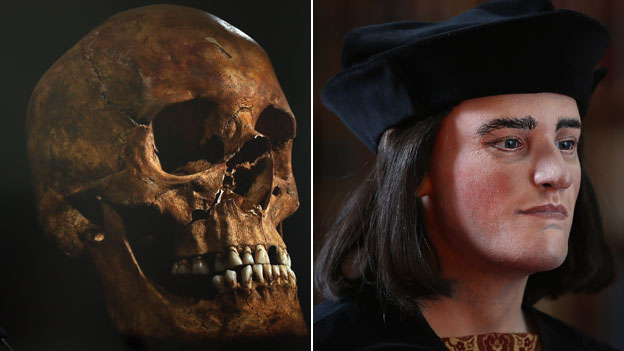How Do You Reconstruct A Face?
February 6, 2013 in Daily Bulletin

Scientists say that they have discovered the remains of Richard III, King of England from 1483 to 1485. Those bones were then used to reconstruct his face to see what he would have looked like. The BBC looked at how this is done and how accurate the process is:
- The position of the teeth and eye sockets show us with a high degree of certainty the shape of the mouth and eyes.
- The nose used to be tough to predict because it’s mostly made of cartilage which quickly decays. However a recently discovered formula accurately predicts the shape of the nose based on the underlying bone structure.
- The ears are hard to get right. It’s possible to tell where they’re positioned and whether or not the individual had ear lobes, their shape can’t be determined.
- The amount of fat on the face, eye colour, skin colour, and hair style all have to be invented.
- There’s a tendency for reconstructed faces to look young. This is because the bones don’t give any indications of the age lines the person had.
Read more about the process, its accuracy, and how one reconstructed face ended up looking like Sir Patrick Stewart over here.
Source: BBC
Join the Discussion! (No Signup Required)